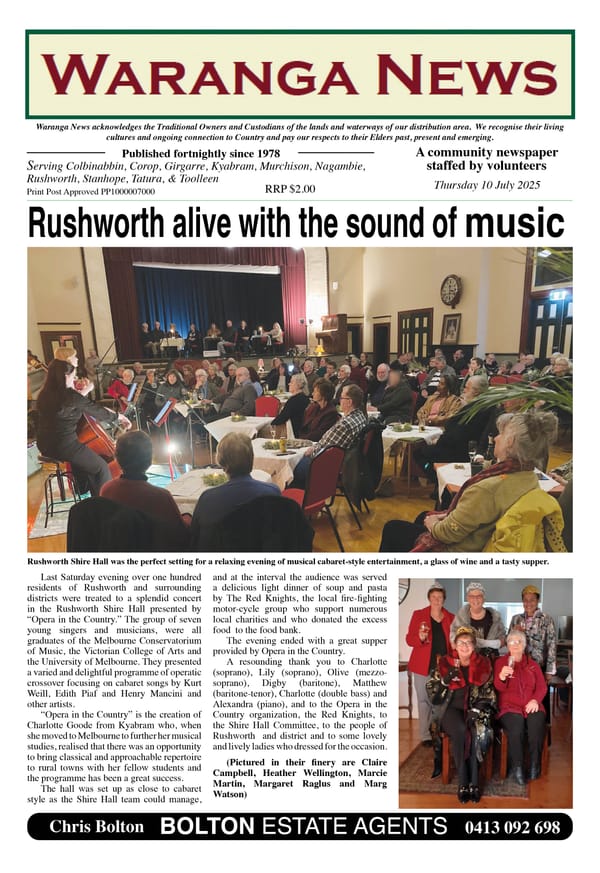4. Out of Africa

Let’s go back in time a little, and briefly reflect on when Homo Sapiens (i.e. the modern human family) first appeared in the Waranga area. A whole range of scientists, from archaeologists to molecular biologists, have been pondering this question for a long time. Recent developments in the study of our DNA have come up with new information that confirms results previously suggested by other branches of science.
There is now little doubt that Homo Sapiens had their origins in East Africa. We all can be traced back “from a single genetic line in Africa within the last 200,000 years.” Expansion to other parts of the world tended to follow coastlines. Initial forays into Arabia and India happened 50-60,000 years ago, with their descendants reaching the north of Australia and New Guinea around 50,000 years ago. There are some fairly recent claims that the arrival date was some 15,000 years before this, but the present consensus still considers around 50,000 years ago as the most likely.
THE FIRST EXPLORERS
When we think about explorers of the Waranga area, we usually tend to look no further back than Major Mitchell coming through “Australia Felix” in 1836, followed in quick succession by overlanders and squatters.
However, on the basis of what we now know, the true first explorers spread relatively quickly around the coasts of Australia, in both clockwise and anti-clockwise directions. In the process, some people moved inland, with the vanguard of this movement reaching our area around 45,000 years ago. Others crossed the land bridge onto country that is now Tasmania, with at least one archaeological site in the south of that state dated at 40,000 years old.
WHAT WAS IT LIKE?
In the period when the first explorers were coming to this area, it was a time of extreme glaciation in the world. Because so much of the earth’s water was in a frozen state, ocean levels were much lower. Consequently, there were land bridges between what is now Australia and the islands around us e.g. Kangaroo Island, Tasmania, Papua New Guinea.
Despite this, there is general agreement that the first arrivals still had to make a substantial part of the journey by crossing the sea, probably by “island-hopping”, then a sea journey of at least 80 kilometres. They didn’t just walk here. Imagine setting off on a small, flimsy craft, without knowing if you would ever reach land.
Australia, and perhaps our area, was then inhabited by so-called “mega-fauna”, who shared the terrain with the first human arrivals. Many scientists believe that humans played a role in the extinction of mega-fauna, through hunting and the use of fire. The climate was much cooler and drier than we experience now.
GLOBAL WARMING
After a period of peak glaciation 15-18,000 years ago, there was global warming which melted ice and caused sea levels to rise substantially. Tasmania and New Guinea became islands as sea levels rose by as much as 100 metres. You can appreciate why people in low-lying Pacific islands, for instance, are concerned about further global warming now.
Over the past 5000 years or so, climate has become more temperate in our area, with warmer temperatures and higher rainfall. These conditions helped to make the area more suitable for human habitation, contributing to a growth in population.
It was also a period of technical and cultural innovation, as indicated by the use of advanced stone tools, collection and use of ochre, the development of trading patterns and land use. The social structure of communities became more complex, as did their spiritual beliefs and practices.
OUR STORY
So our story, the story of human habitation of the Waranga area, goes back a very long way. It did not just begin in the 1830s. It is useful to quote a native American who said “What is life? It is the flash of a firefly in the night…” (Crowfoot). We are insignificant in the overall scheme of things, but should all be proud of being part of an ancient human history of our area which goes back longer than most of us can imagine.
Reference: Meredith, Martin, Born in Africa – The Quest for the Origins of Human Life (Simon & Schuster, 2011); Website - the conversation.com (7.8.18) - When did Aboriginal people first arrive in Australia?




